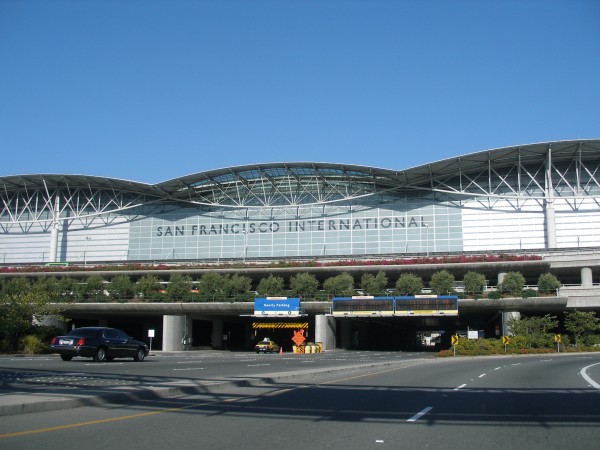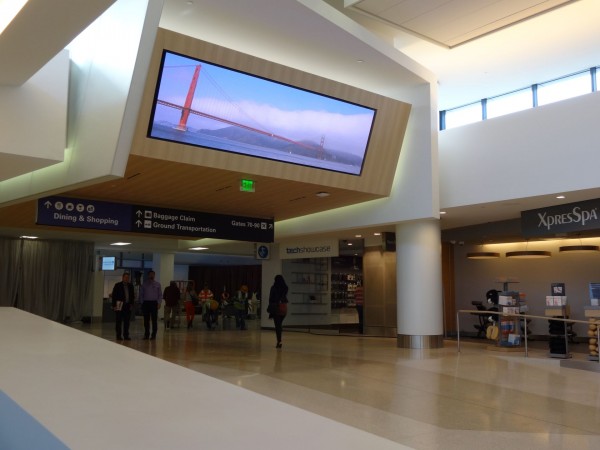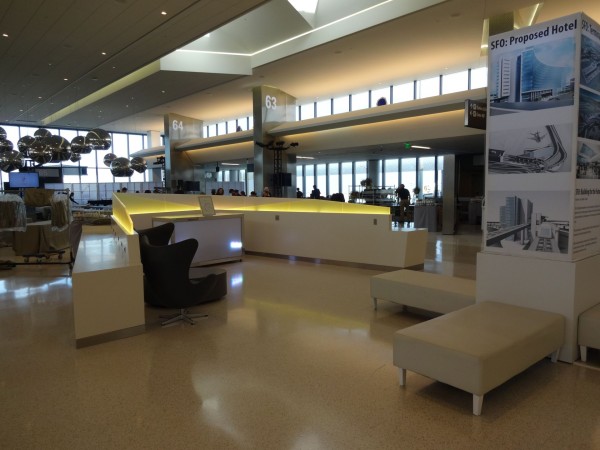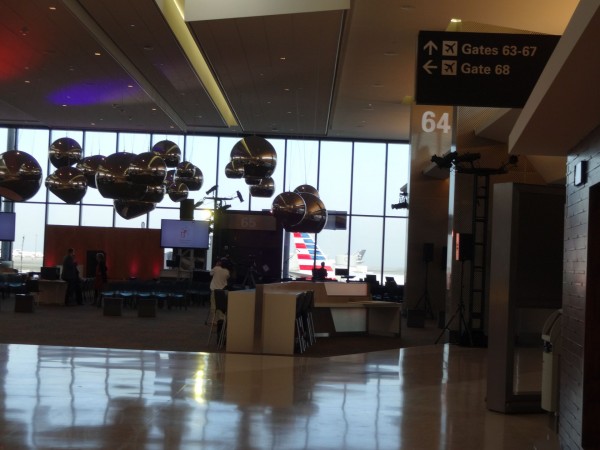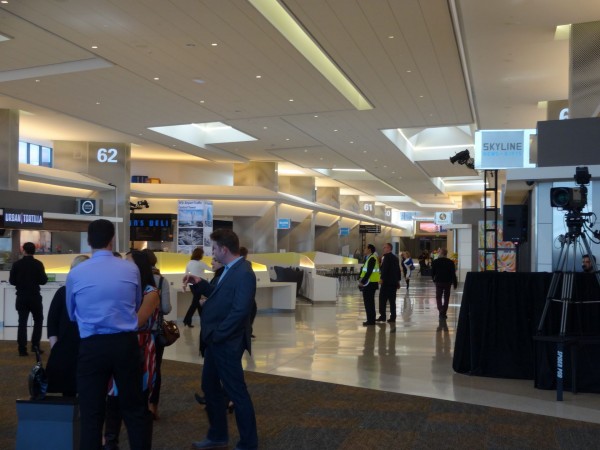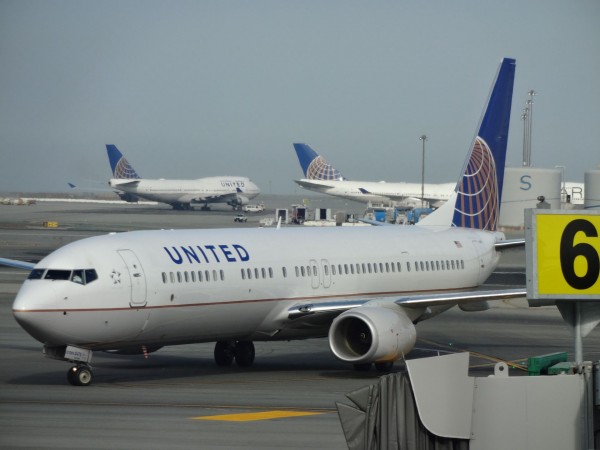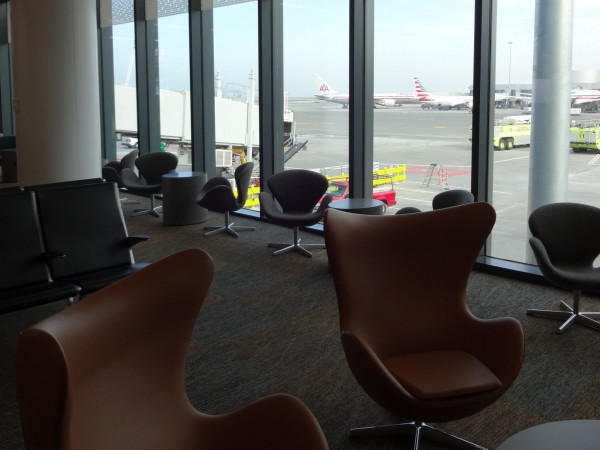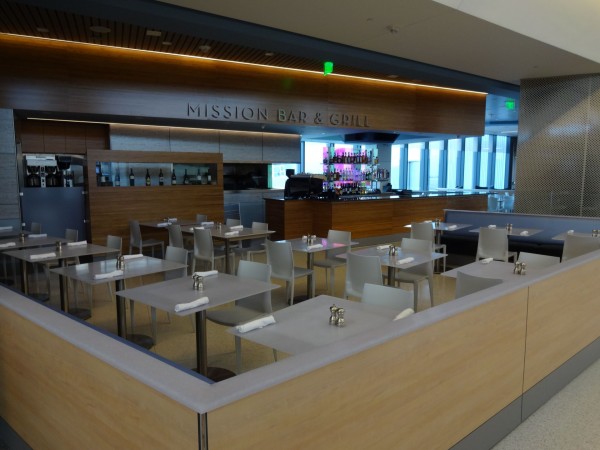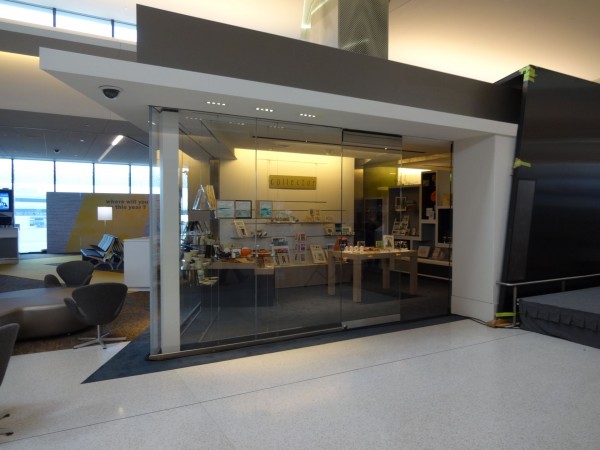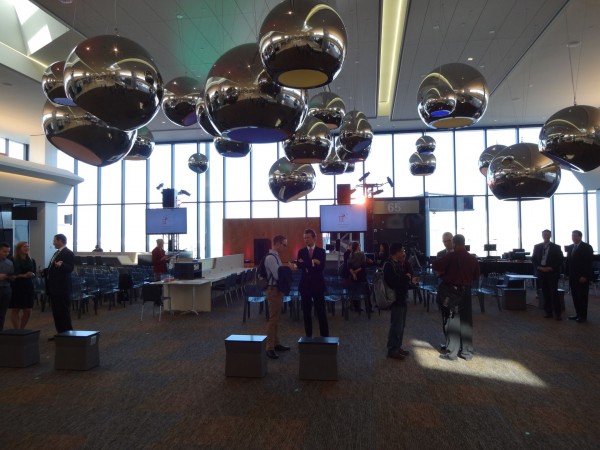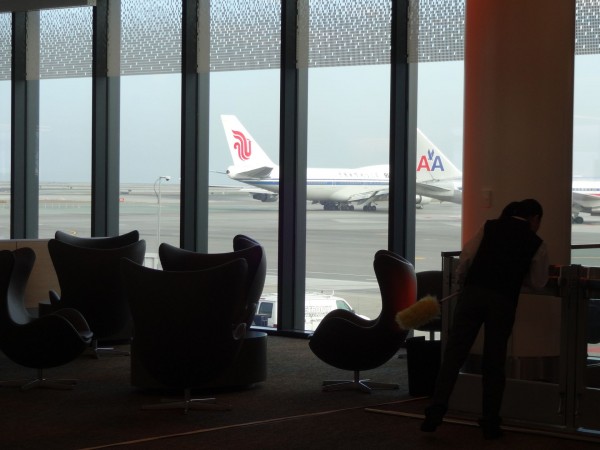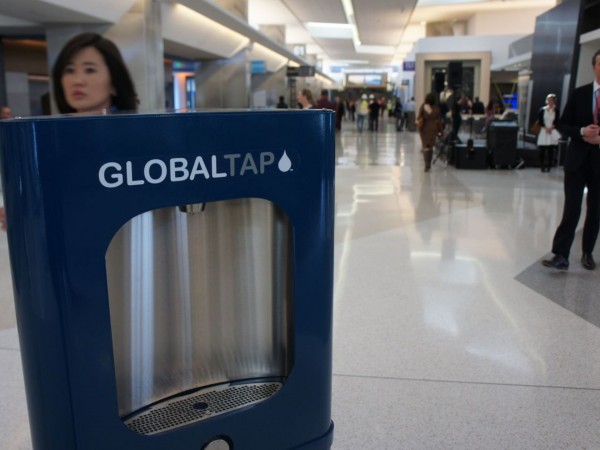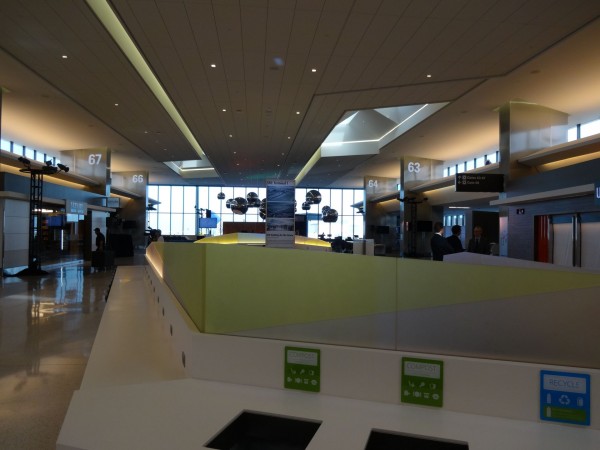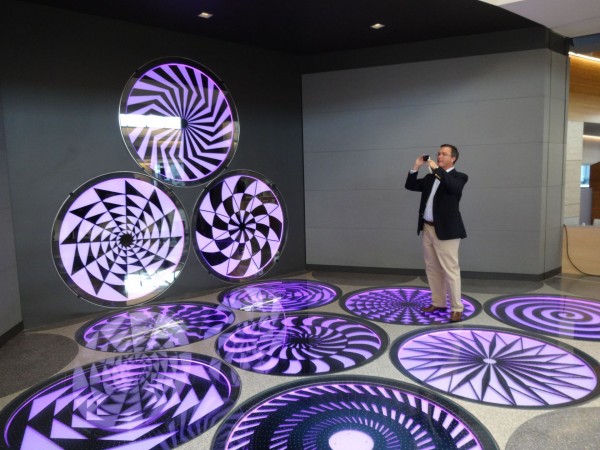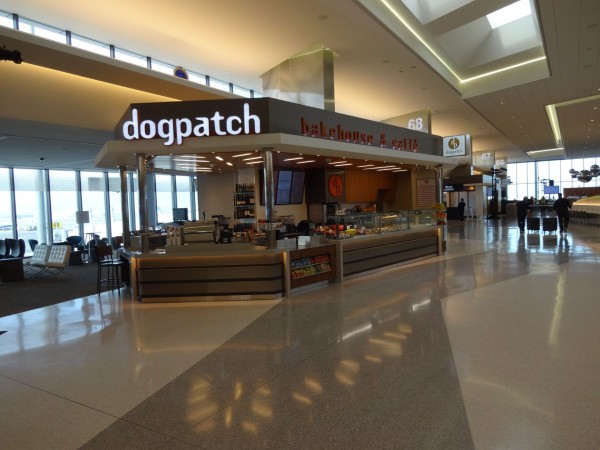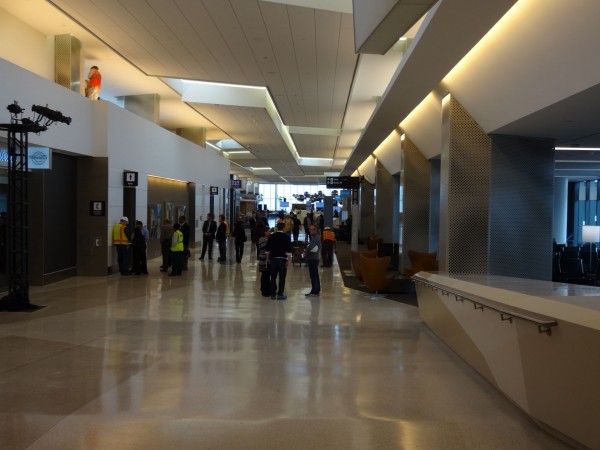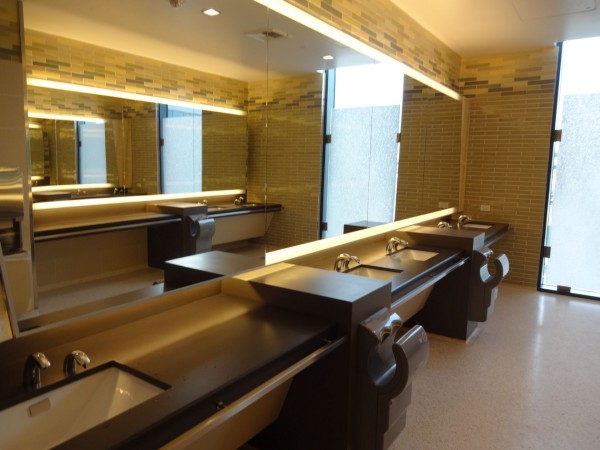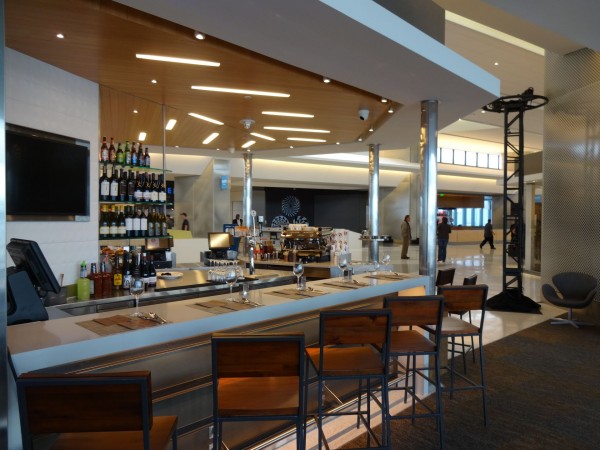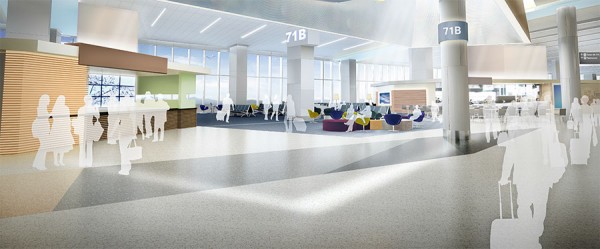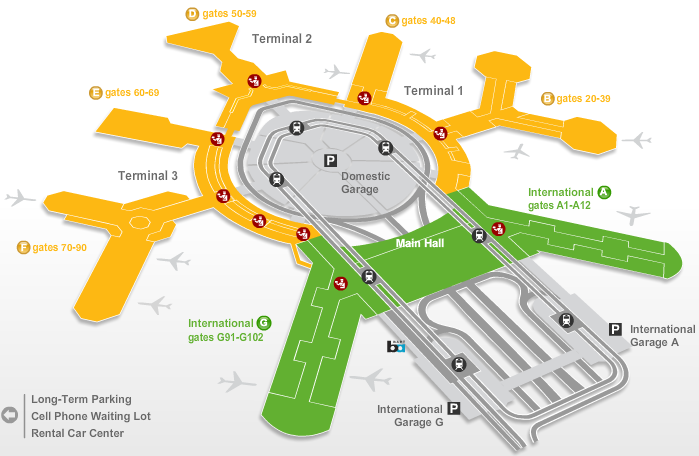
Terminal 3 East at SPFO (Approved) – San Francisco – 94104 – 7/20
Terminal 3 East at SPFO (Approved) – San Francisco – 94104 – 7/20
Project Overview
It took over 80 years for 150 acres of cow pasture to
transform itself from a quaint municipal airport to one
of the world’s twenty busiest airports.
In 1955, with Pan Am’s new Clipper service, the
airport achieved “international” status, making it the
gateway for cosmopolitan travel. Today, San Francisco
International Airport handles over 35 million
passengers a year and the airport, despite massive
expansion and restructuring, is still in need of space.
Despite a topsy-turvy airline business, air travel is
still the most convenient way of getting from point
A to point B. While airlines duke it out over fares and
passengers, airports continue to work twice as hard to
accommodate those planes and passengers.
A new paradigm in air terminal design calls for not
only heightened functionality, but also an evolution
in the integrity of its environmental design.
While there have been many qualitative changes in
air travel since 9/11, passenger expectations for how
an airport terminal should perform continues to rise.
From Wi-Fi service to luxury lounges and amenities,
airports have become intensely charged environments
of activity.
SFIA has set the tone for the capitalization of a captive
audience’s needs and wants. Here, passengers can
find art exhibitions, luxury shopping, fine dining, and
elegant public spaces, all with a distinct “Bay Area”
flavor
Project Scope
The Scope of this Project is a major renovation of the
east half of Terminal 3 (T3 East). This is the second
part of a phased series of renovations occuring in the
building, originally completed in 1979.
The Project will expand the building footprint to
accomodate an enlarged security checkpoint and
increased concessions. The expanded portion will also
house a new United Club Lounge, larger restrooms,
and 3 holdroom spaces with views to the airside.
The project scope also includes the renovation of the
Ticket Counter Area, construction of 2 large skylights
in the post-security area, new airside exterior curtain
wall, the demolition of an existing stair, and upgrades
to the Baggage Claim Area.
The anticipated minimum construction value,
including Baggage System and Passenger Loading
Bridges, will be approximately $140,500,000.
Completion of this project is scheduled for Fall 2015.
Terminal 3 East is striving for LEED Gold certification
Project concept
The overall design approach was to create a unifying
building form that not only responds architecturally
to the recently designed BAE, but also strengthens
a holistic airport masterplan. We maintained the
defining “ring” in plan with all parts connected by
a continuous loop, but also introduced the idea of
segmenting the airport into four easily identifiable
zones (IT, T1, T2, and T3). The idea is that although
there is a common palette throughout SFO, there
would be a stronger relationship between all elements
in their respective “zones”.
The tone for the redevelopment of Terminal 3 was set
by the Boarding Area E project. Increased daylighting,
improved passenger experience, and a modern
architectural expression were all key elements that we
are incorporating into the T3E project.
The expansion of the terminal along the airside
provided an opportunity for large expanses of glazing,
increasing natural light penetration into the terminal
while improving the visual connection to the airfield
from all areas within the terminal. The body of T3 now
more appropriately serves as a neutral connecting
backdrop where BAE and BAF “plug” into.
In keeping with the architectural order of BAE, a thin
frame metal expression with vertical fins surrounds the
hold room areas. Vision glass is maximized from the
floor to the ceiling, 20 feet vertical. A medium value
gray metal panel surrounds the glass to accommodate
airport-required attachments as well as further
connect to the materiality defined by BAE. The curved
curtain wall has a strong vertical articulation, with a
horizontal width similar to that of BAE.
As for the interiors, the look and feel derives its
inspiration from atmosphere – clouds and the
experience of flying – where expanse of high ceilings
with dramatic sculptural sky lit objects float over key
public spaces.
As for the interiors, the look and feel derives its
inspiration from atmosphere – clouds and the
experience of flying – where expanse of high ceilings
with dramatic sculptural sky lit objects float over key
public spaces.
T3 East continues to advance the evolution of a
world-renowned airport by building on the great ideas learned from T2 and BAE.
San Francisco International Airport has an extensive
program in place to reduce ground vehicle carbon
emissions and encourage alternative transportation.
The project is fully accessible by all means of
alternative ground transportation including AirTrain
and BART, public and private bus services, “green” car
rentals provided through SFO’s incentive program,
and alternative-fuel taxis and shuttle buses meeting
SFO’s standards for airport users. Bike parking will
be provided at the courtyard adjacent to Terminal 3
(some employees at SFO do in fact prefer to arrive by
bicycle), and showers will be available for these bike
commuters as well.
Water use is a significant concern, primarily in the
area of plumbing fixtures as there is no landscaping
associated with the T3 East project. SFO is increasing
the efficiency of its restroom plumbing fixtures to
between 35-38% below the International Plumbing
Code maximum allowed amounts, depending on the
final fixture selections. This project will improve on the
new standards that were already set at SFO’s Terminal
2 project and BAE project.
Energy efficiency is a top priority. Most of the energy
used to heat and cool the building is consumed at the
terminal complex Central Plant, which provides hot
water and chilled water to all the terminal buildings
including T3. While this project cannot impact the
Central Plant, SFO is engaged in a multi-year efficiency
improvement to the Central Plant that will result in
energy savings within T3 as well. The main energy
uses within the building are expected to be fan power
for ventilation and interior lighting; fans will use
the energy-saving displacement ventilation system
deployed successfully in Terminal 2; interior lighting
will aim to be at least 15% more efficient than the
maximum allowed by California Energy Code. The
project will install solar photovoltaic panels to offset
some of its electrical load as well. In addition, the
project is committed to aggressively managing future
energy use through an in-depth commissioning
process, to ensure equipment is functioning optimally
at start-up, and through the extensive use of energy
monitoring equipment to track future energy
efficiency.
Basis of Design
ENHANCE CUSTOMER EXPERIENCE
Increase revenue opportunities and expand
the footprint by increasing concession space to
approximately 14,000 square feet to accomodate 1.5
million passengers. In addition provide Customers
with Local Foods, Vendors, Technologies, and Unique
Eating Experience.
INCREASE DAYLIGHTING
Let the daylight in by enhancing the space through
height and light in a meaningful way. Take away the
bleak with simple methods to bring in nature and
daylight. Celebrate air travel by highlighting the view
of airfield operations. Furthermore, provide productive
waiting experiences that remind us why we love to fly.
FOCUS ON SUSTAINABILITY
Celebrate green by concentrating on a people-focused
indoor environment. Optimize for an airport-specific
high performance system. Make green overt and
transparent as a learning environment. In addition,
bring local to the boarding area.
INCREASE AMENITY SPACE
Increase space for amenities through a series of
journey points by adding approximately 4,000 square
feet of customer-oriented amenity space. Create
unique, unexpected, purposeful oases for passengers.
INCREASE CHECKPOINT SIZE
Increase the Security Chekcpoint size to comply
with new TSA regulations and requirements while
improving the passenger experience through it. More
security lanes included to speed up the screening
process.
Preliminary Schedule
December 18, 2012: Design started with NTP issuance
January 7, 2014: Construction completion of Mod 4 Ticket Counters
July 6, 2014: Substantial completion of Mod 3 Security Checkpoint Lanes
July 16, 2015: Substantial Completion of T3 East expansion
October 14, 2015: Final Completion

